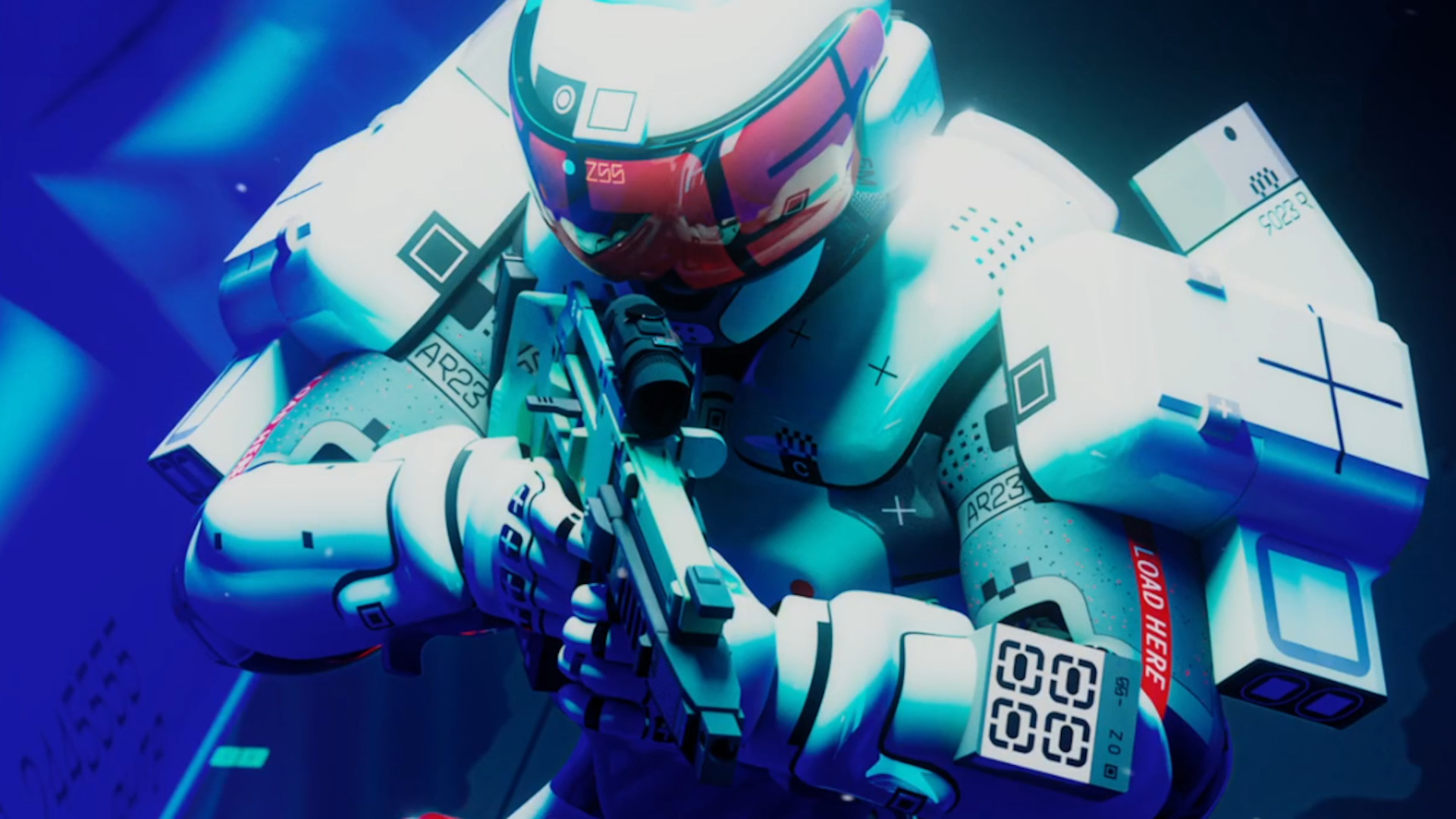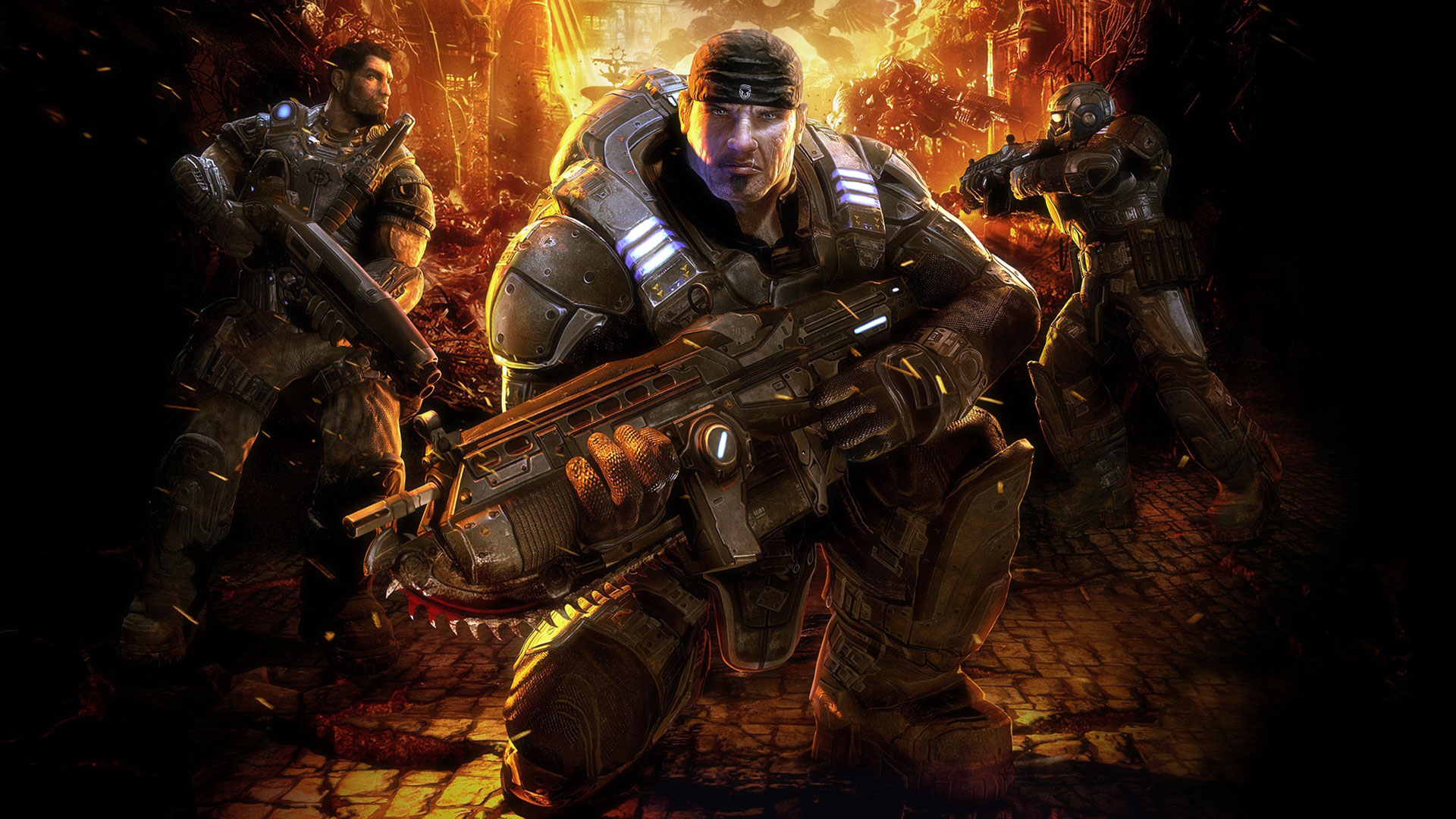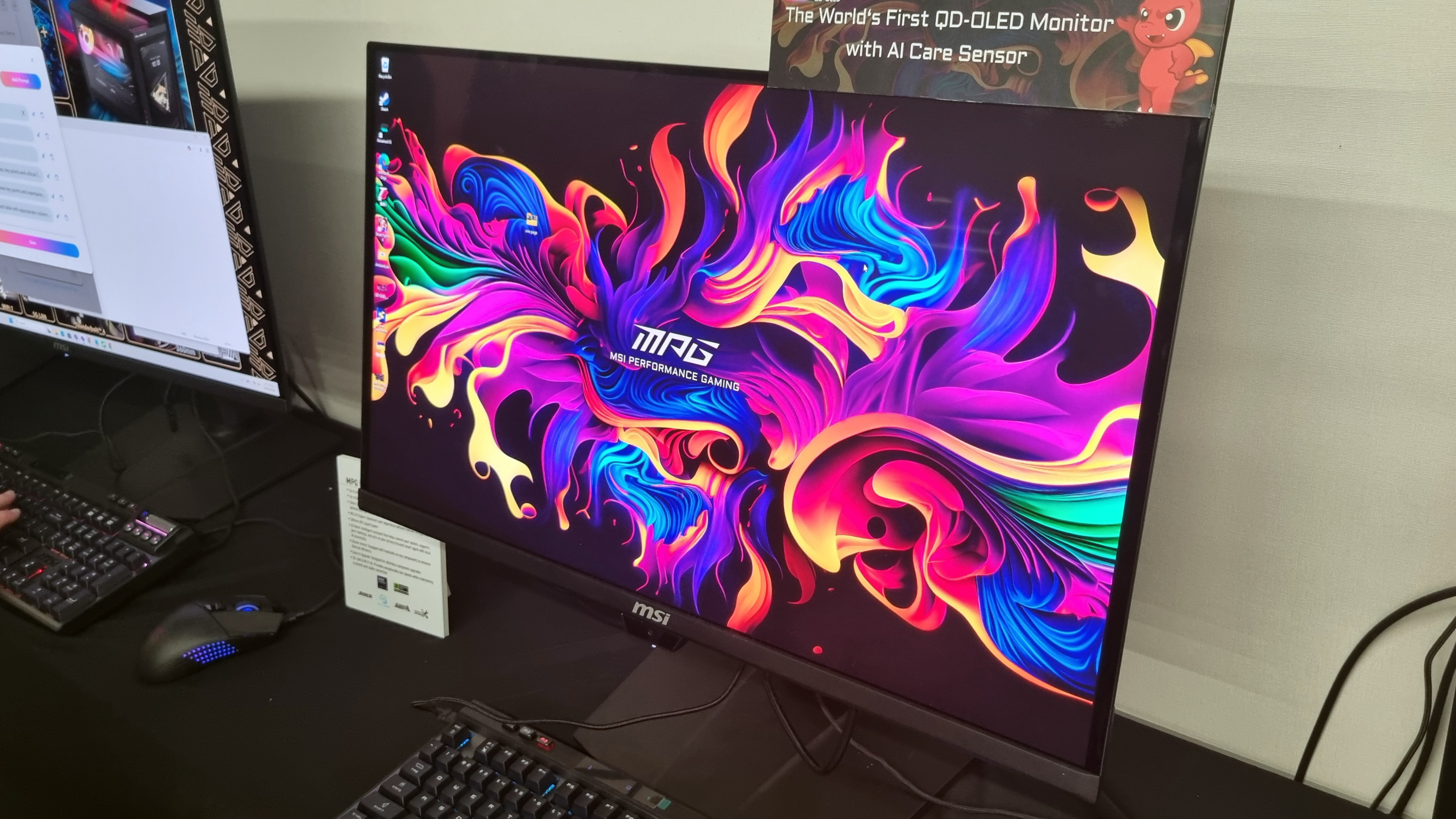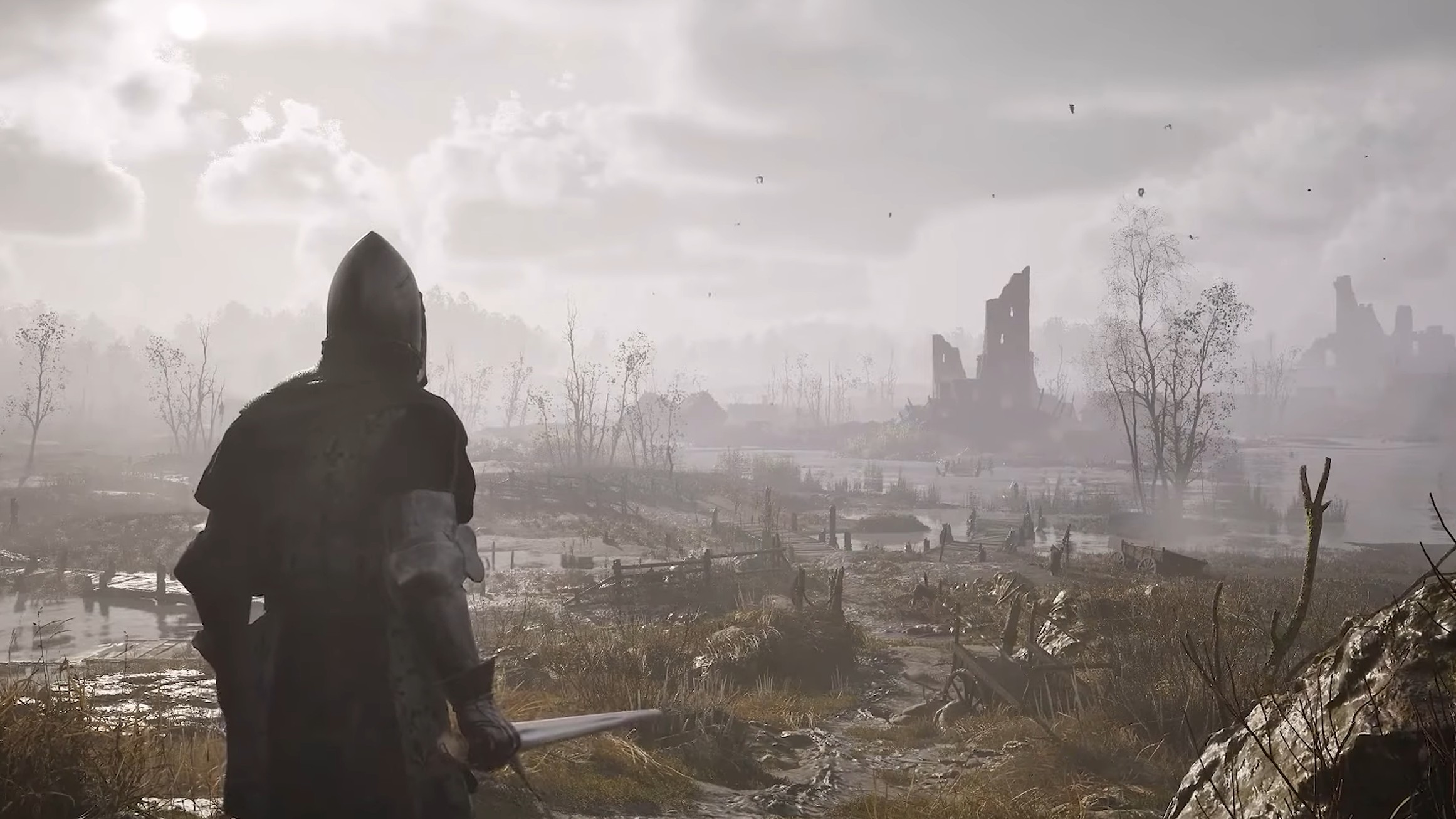
Riot’s 2XKO is the Tag Fighter I Didn’t Know I Wanted
About 50 minutes into my “please play as long as you want” hands-on demo with 2XKO at EVO 2024, I realized I was going to miss the first match of my Tekken 8 pool. About 30 seconds later, I also realized I didn’t care; I was having too much fun. Getting DQ’ed from my Tekken bracket would suck, sure, but if I was lucky, I could probably play my loser’s game. And besides, I was getting to play with Vineeth “ApologyMan” Meka, a noted fighting game pro who was working on 2XKO, and showing my group what the game might look like at a high level. When was I going to get a chance to do that again, or see the game played like that, live, in front of me, pre-release? Compared to that, starting out my Tekken run in the loser’s bracket wouldn’t be so bad.
This wasn’t my first rodeo with 2XKO; I’d also played it at EVO last year, but what stood out to me was how much had changed, both on a systems level and with the new characters. There was only one truly new character in this build — Braum, a massive, muscled, seriously-this-dude’s-pecs-have-pecs shield-wielding vmountain of a man who runs around with the adorable little poros — but it was a lso my first time getting to play Illaoi (who was first available at EVO Japan), see some of the new stages, experience Pulse (the newest addition to the Fuse system), and get a feel for the changes Riot has made to Ahri since I last played. It was a lot to come to grips with, but I came with a deeper appreciation for what Riot is trying to accomplish with 2XKO — and I left very, very excited to play it again.
First things first: if you’ve never heard of 2XKO (formerly Project L), it’s Riot Games’ attempt to bring the League of Legends universe to fighting games. 2XKO is designed to be simpler and less intimidating than most fighting games, even by the standards of a tag fighter, which usually feature simpler inputs compared to one-on-one examples like Street Fighter, Guilty Gear, or Tekken. If quarter-circles, DP motions, and 360s make you grind your teeth, 2XKO wants to bring you in and help you along in ways that make it easy to pick up and play without losing the technical depths fighting games are known for.
2XKO is designed to be simpler and less intimidating than most fighting games.
Unlike the most famous tag fighters — think Marvel vs.Capcom 2 and 3 or Dragon Ball FighterZ — 2XKO is a 2v2 game, not a 3v3 one. Secon dly, it’s a game you can play solo or with a friend, with each of you taking one of the characters on your team. Finally, it uses a simplified control scheme similar to Street Fighter 6’s Modern control option. You’ve got a button for Light, Medium, and Heavy attacks, two buttons that can be used for special moves and supers, and one for tagging in your partner or calling an assist. There’s also a button for dashing and parrying, but we’ll come back to that in a second. Can’t do a DP motion reliably? No problem. All you have to do to pull off the flashy specials in 2XKO is hold a direction and press a button.
You Can Mash if You Want To
So, yeah, 2XKO is easy to pick up and play, but it has all of the sicko (affirming) stuff a fighting game needs. That means a strong strike throw game, some of the dirtiest mix-ups you’ve ever seen (you are not blocking some of this stuff, trust me), and stylish combos that will melt health bars and look good doing it. Everything the body needs, all in one very beautifully animated package.
Let’s start with accessibility: one of the big new additions in this build is Pulse, the newest option in the Fuse system. You select your Fuse option before a match starts, and you’ve got a lot of choices: the first is Double Down, which allows you chain your point character’s super into another super from your backline character for massive damage (you have probably heard this referred to as a DHC, or Delayed Hyper Combo if you’re a Marvel or DBFZ player); Freestyle, which lets you tag in your partner twice in a single sequence; 2X Assist, which gives you two assist options in a single assist call-in; and Fury, which automatically boosts your damage when your health is low.
All of these are great options, but Pulse joins Fury as being geared for new players. With Pulse, you can just mash Light, Medium, or Heavy and get an autocombo. That’s not to say that 2XKO’s regular combos are super difficult by default; you can do a basic combo by chaining Light, Medium, Heavy, and Special together from weakest to strongest, but Pulse is a great way to get a feel for how characters operate, especially if you’re new to the game, or, like me, playing it for the first time in a year.
Foxes, Tentacles, and Poros, Oh My
I also really liked the changes to Ahri. Previously, you had to manage the charges for her Foxfire special and manually reload them, which was difficult. Now, you spend them one at a time, and get access to a three-hit rekka that Ahri can choose to cancel into a mix-up or continue combos with. This makes her easier (and more fun) to pick up and play. One of her special moves also changed from a bomb to a projectile that stays in place for a moment before homing in on your opponent. It allows for some cool setups and shows that Riot is listening to the playerbase and incorporating the feedback they’re getting into the game.
Riot is listening to the playerbase and incorporating the feedback they’re getting into the game.
Then there’s Braum, who was completely new to this build. Don’t let his muscles fool you; Braum’s a defensive powerhouse with an unbreakable shield he can power up with ice magic. Unsurprisingly, that makes up a large part of his kit. Certain moves coat his shield in ice, allowing him to armor through attacks, stealing back his tur n or winning neutral interactions he might otherwise lose. His assists also let him pop in and shield his tag partner or get the party started with a charge attack. Oh, and he can throw his adorable, furry poros at you, too. Braum works best as a support character, but don’t let that fool you either; he can absolutely dish out the damage if he hits you. He’s a unique character, and seeing him played at a high level made me excited to get him into the lab and see what I can do with him with some practice.
My favorite new addition, though, was Illaoi, the Kraken Priestess. Illaoi is a high-damage powerh ouse who can summon tentacles to set up her combos and pressure strings. One of her specials summons them and the other activates them. To be clear, she’s not a puppet character; she’s plenty scary without the tentacles. But if you set them up right, she can deal absolutely monstrous damage. That said, your opponent can knock your tentacles out by hitting them, which removes some of her best and scariest neutral tools. Playing Illaoi means taking smart risks, setting up your tentacles, and cashing out when you land the right hit. If you can’t do that, though, you’ll have to take more risks or rely on your tag-team partner to set you up. Playing Illaoi right is a blast, and I can’t wait to spend more time with her.
Run It Back
The rest of what I saw from 2XKO is the same as it was last year; Darius, Ekko, and Yasuo return, and the systems are still incredibly solid. I love that there are so many defensive options: the parry I mentioned earlier comes in two flavors — standard and low — and will open up your opponent if you time it right, but leave you open if you guess wrong. There’s also classic tag fighter systems like pushblock and retreating guard to help you out on defense, and Dynamic Save, where your tag partner can come in and save you mid-combo, similar to Guilty Gear’s Burst. But there’s also unique systems like Last Stand, where your defeated tag character can come in for one last, powerful attack.
What impresses me most about all of it is how unique it feels. You can point out 2XKO’s influences, but it feels original, and most importantly, nails the League of Legends art style and vibe, and translates the characters admirably. It feels great so far, and coordinating with your partner during a tag or yelling ”Save me! Save me!” while you’re being comboed is a lot of fun.
I made my Tekken pool, as it turns out, and won my first game before losing the next two. Not bad for someone who didn’t practice beforehand. My fondest memory, though, was pulling off a huge comeback with Illaoi while I was teamed up with Meka against two IGN staffers. I had one hit left, but somehow, we managed to pull it out. When it happened, he grabbed me by the shoulders and shouted “Yes! Let’s go!” That’s what makes fighting games great, and the fact that 2XKO can evoke that feeling — we were all cheering, laughing, fist-bumping, and shouting “Oh, no!” during the round-robin sets we played — while it’s this far away from release is special.
Riot clearly cares deeply about getting 2XKO right, and that dedication is on full display so far. When Riot’s staff finally kicked us off the demo station, I was satisfied. But I still can’t wait to play more. That Alpha Lab invite can’t hit my inbox soon enough.








